The English Labrador has a lineage that was specifically bred for companionship and being shown in competitions. This sturdy dog has a broad muzzle, wide head, floppy ears, and a strong chest. Their distinctive otter tail is held proudly, and their dense double coats come in black, chocolate, and yellow. While most English Labs have a classic solid color, there are variations due to dilute genes and selective breeding. Originally, all Labradors were bred for field work, retrieving game, and working closely with their owners. Over time, they developed into separate types, with English Labs being more suited for the show ring and as family pets. Their intense hunting instincts were toned down to a more manageable level. However, their friendly and outgoing nature towards people, other dogs, and anything else they come across has only increased over time. What caused the division of types? Exploring the origins of the name Characteristic features and behaviors Health tips and training techniques for English Labs Raising English Lab puppies These intelligent dogs still display traits of their hardworking ancestors, but they have their own unique build and personalities.
The Allure of the English Labrador As someone who has a passion for sporting dogs and has raised multiple American Labrador Retrievers, I can appreciate the charm of the English Lab with its classic and attractive features. Like many other Lab owners, I have introduced English Lab lines into my life and have had the pleasure of sharing my home with a lovely English chocolate Lab for quite some time. In this piece, I will discuss the distinctions between the American and English Labrador, drawing from my personal experiences of living and training both types of these wonderful canines. I will also provide insights on how to find and care for your first English Labrador, along with sharing some delightful pictures of these dogs. Feel free to leave a comment on this article or share photos of your own English Lab on our forum or Facebook page. We are excited to see your furry companions!
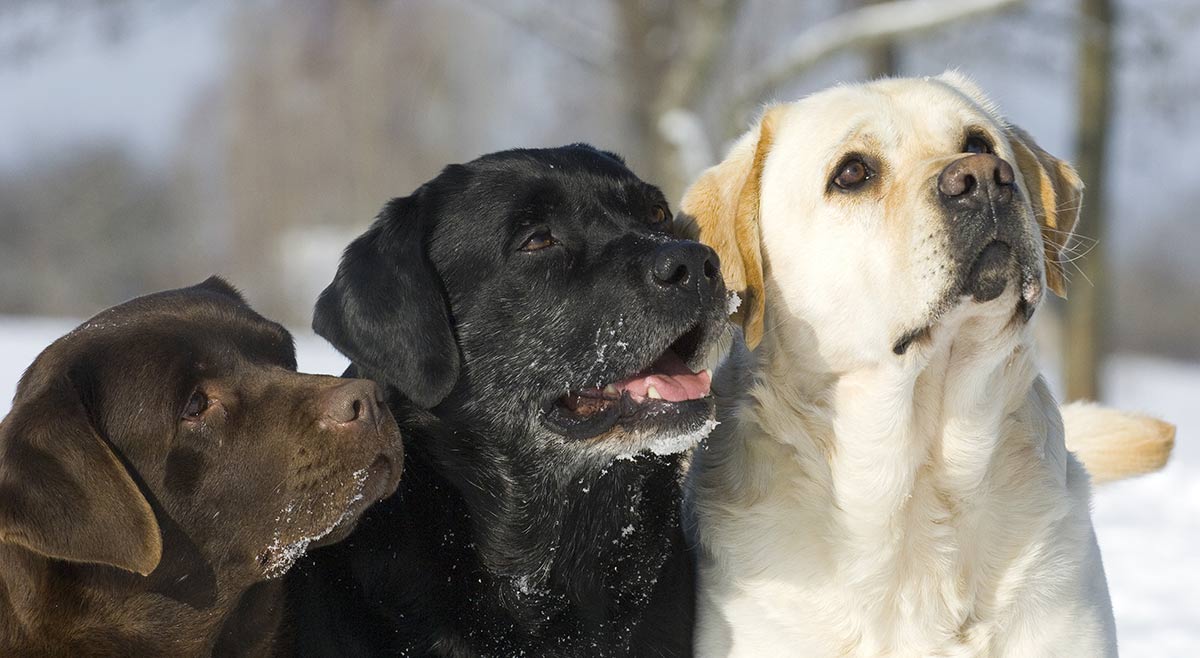
English vs American Labs Labrador Retrievers have been divided into two distinct types around the globe. One group of Labs has been bred for their exceptional qualities as family pets, while the other group has been bred for their exceptional athleticism and hunting skills. This division in the breed is not unique to the United States, as it has occurred in various countries worldwide.

Why Labradors Diverged into English and American Labs With dogs having a litter every year, the effects of selective breeding are quickly evident. In the latter part of the 20th century, dog shows gained popularity, leading to multiple generations of Labradors bred purely for appearance rather than working ability. As breeders focused on achieving a certain look, traits such as heavier bodies and larger heads became prevalent. Simultaneously, those using Labradors for field trials began breeding dogs specifically for these competitions. The field trial community in both the US and UK became the primary breeding ground for Labradors, with breeders aiming to produce Field Trial Champions whose success can result in profitable stud fees. Unlike show dogs, field trial Labradors are selected for their retrieving and marking abilities, as well as their speed and athleticism, rather than appearance. This focus on performance over looks led to the development of American Labs that excelled in working tasks. The split between English and American Labs occurred relatively quickly in history and was nearly complete within five decades. However, not all Labradors fit the extreme standards of one type or the other, as some moderate examples can be found in both English and American lines.
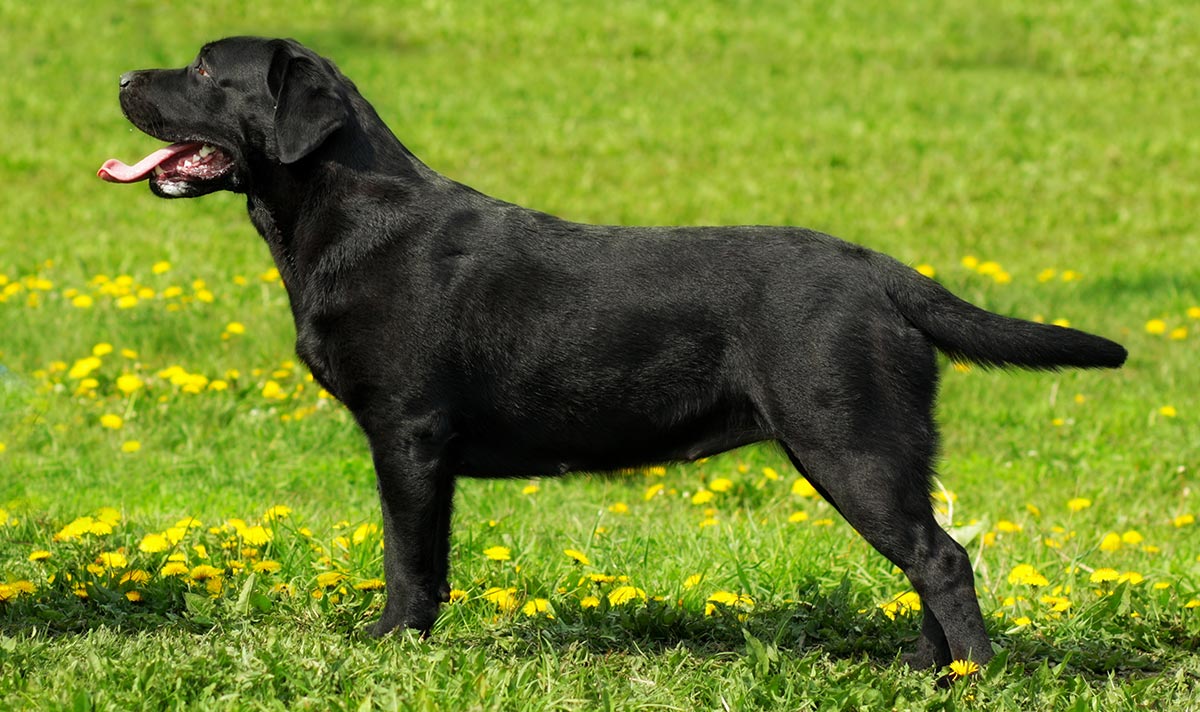
It has been a long time since we last saw a Labrador achieve champion status in both the show ring and the field. The term “English Labrador” can be misleading, especially for our European readers. Despite the name, most English Labs in the US are just as American as their counterparts. The distinction between English Labs and American Labs is based on their purpose as either pets or hunting partners. In England, English Labs are known as Show or Bench Labradors, while in America, they are referred to as working or field-bred Labs. It all comes down to where they were born, with an English Lab being from England and an American Lab from America.

The English Labrador breed originated in Newfoundland with English settlers who brought their hunting and fishing dogs with them from England. Although all Labradors have English roots, early Labradors were primarily working dogs. The history of the breed is quite intriguing, with a split between English and American Labs occurring later in the twentieth century due to the Labrador’s popularity as a pet. Until the 1940s, Labradors were essentially one strain, with a breed standard based on their role as working retrievers. However, over the years, two different types of breeders emerged, leading to the development of two distinct strains of Labradors. The classic features of an English Lab include a larger, heavier head and a thick tapering otter tail. A notable difference between English and American Labs is the size and shape of their heads, with the English Lab having a broader head and a more pronounced “stop.” Additionally, English Labs typically have large, kind eyes set apart in their broad skulls, while American Labs may have eyes that are slightly closer together.
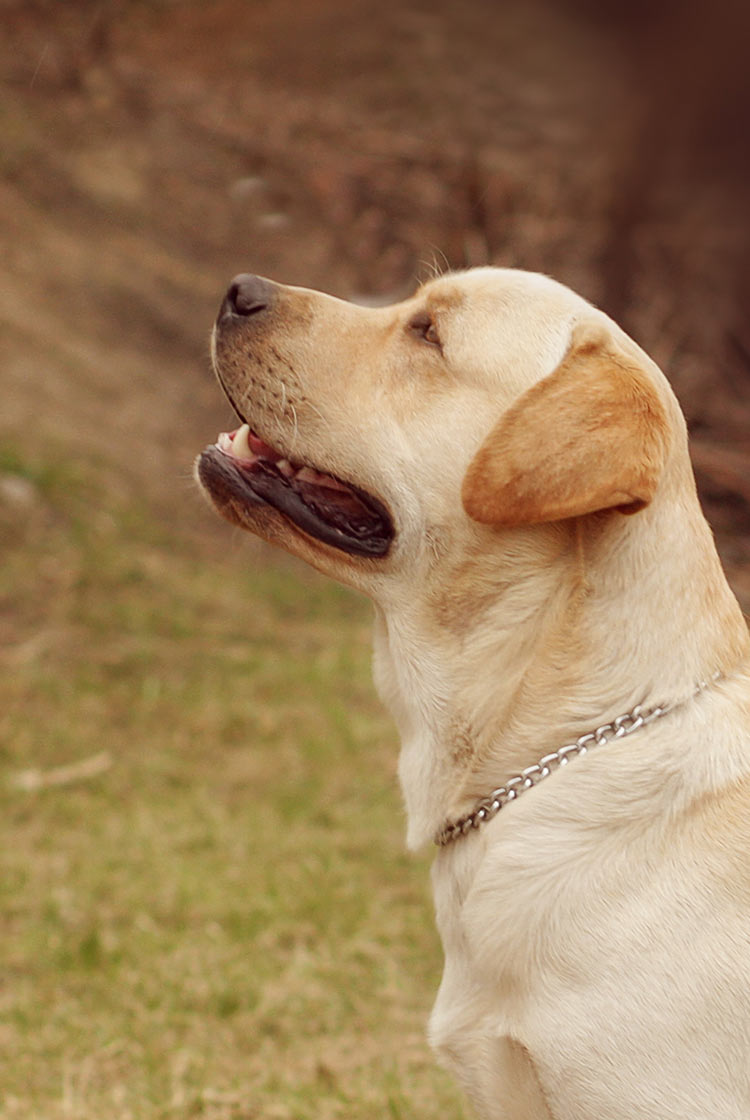
Body Structure As we look at this beautiful dog from head to tail, we notice a consistent theme in its body shape. The dog has a strong neck that is proportionate to its head, a broad and deep chest, and powerful hindquarters. The tail, a favorite feature for many, is heavy and hangs down behind the dog. In contrast, the American Labrador often appears narrower when viewed from the front, giving off a lean and agile impression. This type of Labrador seems to be built for speed and agility, as well as strength. Do English Labs Tend to Be Shorter? The English Labrador’s deep and broad chest might make it appear shorter in the legs compared to the American breed. In some cases, show line English Labs are indeed a bit shorter in the legs, relative to their spine, than working strain Labs. English Lab’s Distinctive Otter Tail The thick otter tail that tapers to a point on an English Labrador can be a potential hazard to fragile items on your coffee table, but it adds to the dog’s overall appeal. On the other hand, some American Labs have a more slender tail with a curve or an upward sweep, deviating from the low-set tail of their show line counterparts. Key Characteristics of the English Lab Some distinguishing features of the English Labrador that set it apart from its working strain or American relatives include a broad head and neck with strong features, a deep broad chest, slightly shorter legs, and a thick tapering tail carried low. Show bred English Labs tend to have a stockier and chunkier appearance, which many people find endearing. English Labrador’s Coat Being originally bred to brave the cold waters of Newfoundland, it comes as no surprise that the English Labrador boasts an incredible waterproof double coat. Though they may not need to swim in freezing temperatures nowadays, show line English Labs have retained their beautiful coats. However, some working line Labs have lost the thickness of their coat over time.
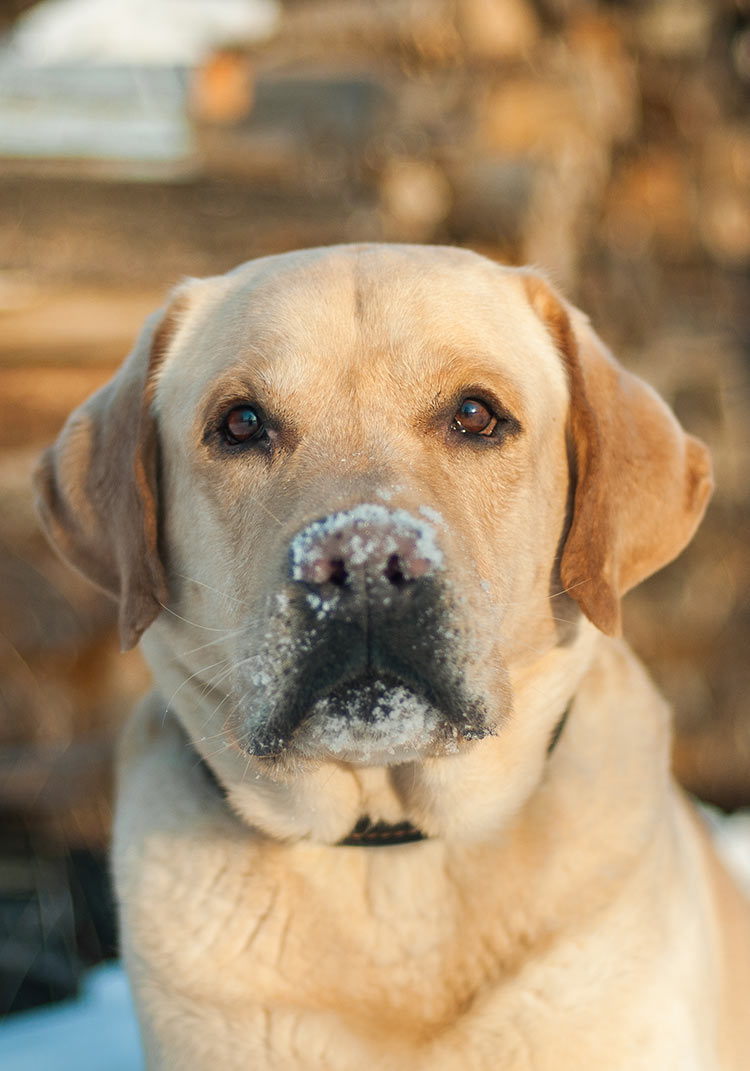
English Labrador Retrievers have a thick, cozy double coat that provides them with ample warmth. Not all American Labs have the same double coat found in show ring Labs. It may seem strange that working Labs have lost their original working coat, but it’s not surprising when we consider the breeding origins of American Labs. Let’s dive into that in a bit. But first, let’s talk about weight. Weight can be a significant issue for show line Labs, as their build often results in them being heavier compared to American Labs of the same age, from puppyhood to adulthood. While you can find detailed growth charts in my article on puppy development, it’s crucial to remember that English Lab puppies may be on the higher end of the weight range. When it comes to temperament, there are some differences between English and American Labs, although they may not be as distinct as one would expect. Both strains are known for being friendly and gentle dogs, but English Labs might be less energetic and driven outdoors. This can make them easier to manage, as they are not constantly on the hunt for something to fetch or chase.
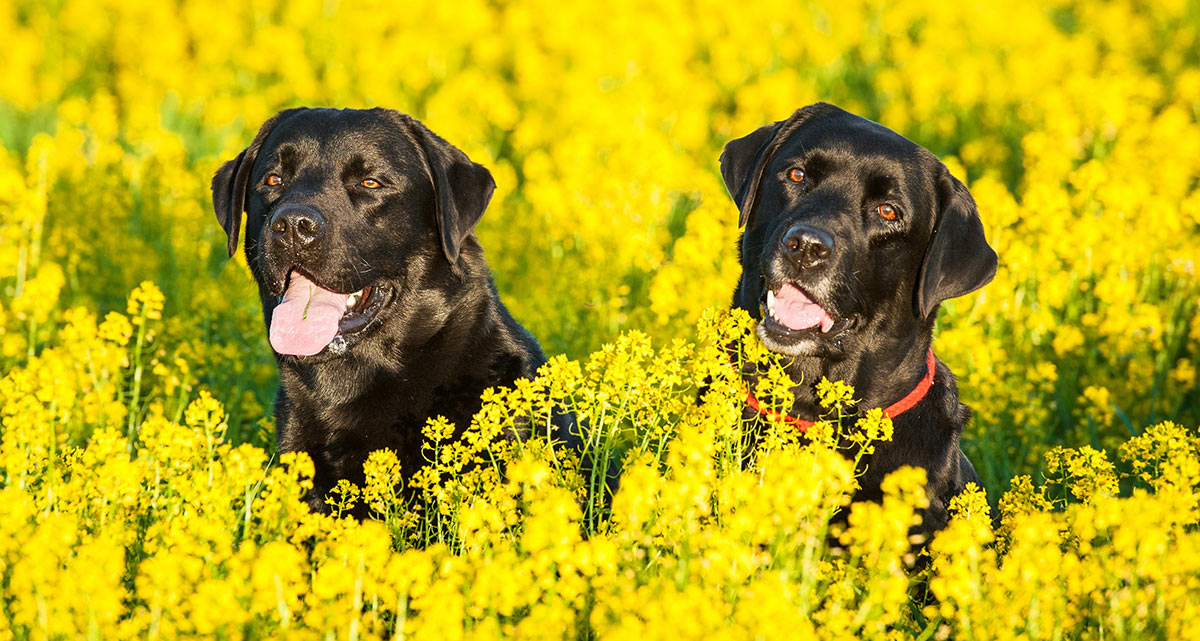
On the flip side, English Labs tend to have a more playful and easily distracted nature. They are more likely to engage with other dogs rather than chase after a ball for you, which can sometimes make them a bit trickier to handle. American Labs, on the other hand, are known for their strong hunting and retrieving instincts, making them resilient and active pets. With proper exercise, training, and mental stimulation, they can be great companions at home. However, if their needs are not met, they may become restless and exhibit destructive behavior. In contrast, English Labs are generally calmer and more relaxed, even if they don’t get as much exercise. While they may be energetic when young, they often grow into affectionate and gentle companions. When comparing English Lab and American Lab puppies, experienced breeders or Labrador enthusiasts can typically distinguish between the two at a young age. Below is a comparison of two of my Lab puppies at the same stage of development.

The dog on the left is mostly English Labrador with a quarter American Labrador in her lineage. On the right, we have a pure American Labrador pup. The American Labrador has a slimmer face and bigger eyes and ears compared to her head size. If the chocolate pup didn’t have some working genes mixed in, the contrast between them would be even more noticeable.
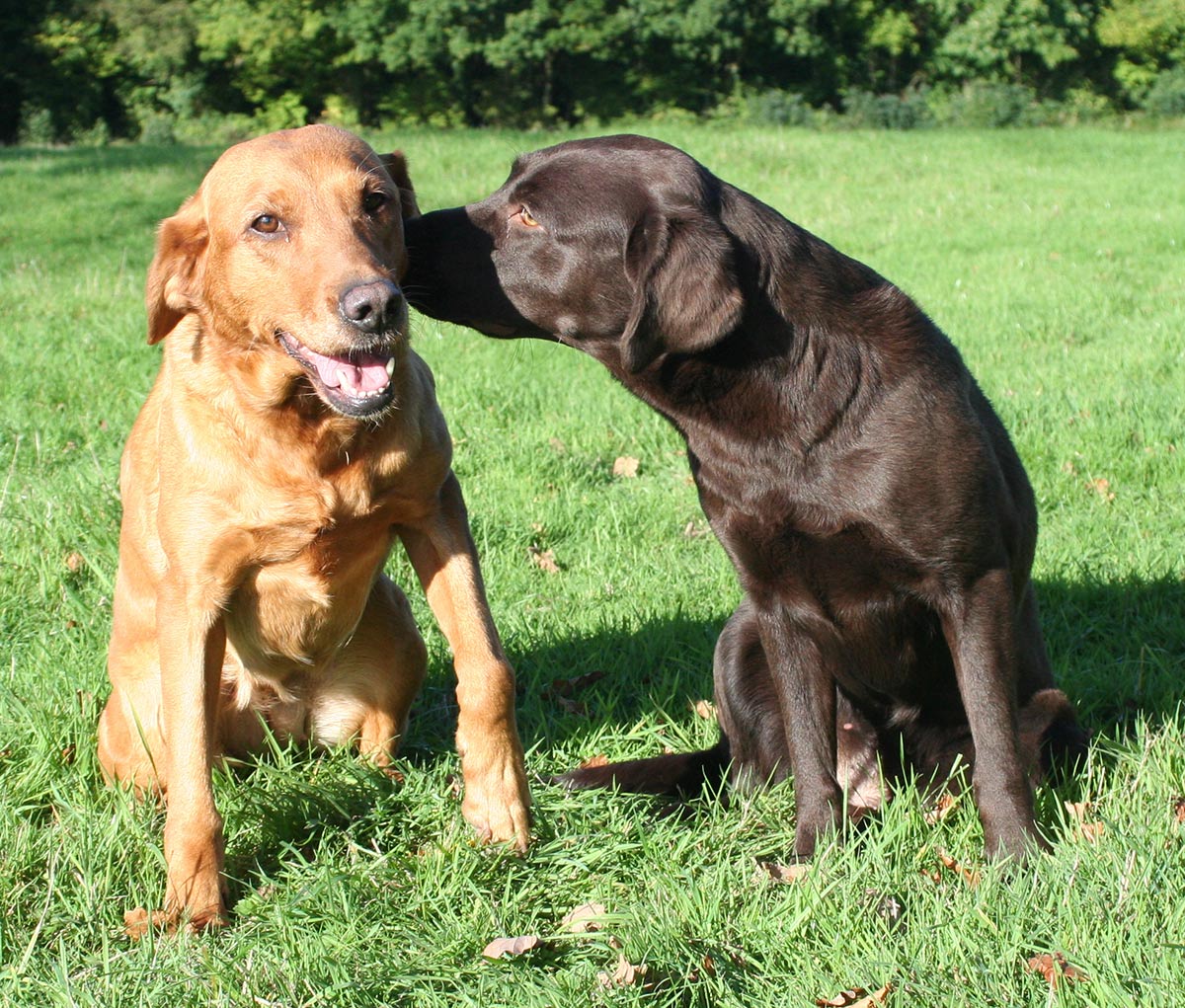
English Labs: All Grown Up and Full of Personality As these English Labradors have grown up, their individual characters have become more distinct than ever before. Tess, the yellow Lab, exhibits a focus and sensitivity typical of Labs from working lines. She is confident, fun-loving, and always eager to please. On the other hand, Rachael is more sensitive, easily distracted, and playful to the core. Despite her challenges in challenging situations, she is a keen retriever with a strong drive. While personality differences are to be expected among Labs of the same type, English Labs are often noted for their distractibility and playfulness compared to American Labs. English Lab Varieties of Colors English Labs are commonly found in three main colors: black, chocolate, and yellow. The yellow Labs come in a range from pale cream to rich golden shades. The darker fox-reds typically come from working lines, with paler yellows or creams being more common in English Labs. Distinctive Silver English Labs A controversial color variation in Labradors is the silver Lab, resulting from a gene that dilutes the chocolate coat. Despite being registered as “chocolate” by AKC, silver Labs are not as recognized in English Labs as they are in American Labs due to show ring restrictions. Grooming Your English Lab Fortunately, grooming English Labs is not a high-maintenance task. Their nearly dirt-resistant coats make them easy to care for, with baths recommended only when necessary. Regular brushing and grooming with a Furminator during shedding season can help keep their coats healthy and shiny. English Lab Health Concerns Like all pedigree breeds, English Labs are prone to genetic diseases that can be avoided by choosing puppies from health-tested parents. Common health issues in English Labs include joint problems, eye disorders, cancer, and diabetes, all of which can be managed with regular check-ups and proper care. Training Your English Lab English Labs are known for their trainability and obedience, making them popular as service dogs. However, training support may be needed during challenging phases such as biting as puppies or during their energetic teen years. Utilizing modern, force-free training methods can help bring out the best in your English Labrador. Choosing the Right Lab for You Both English and American Labs share common traits such as sociability and energy. If appearance is a priority, an English Lab may be the better choice. For active individuals looking for a hunting companion, the American Lab may be more suitable due to their drive and athletic ability. While English Labs can work as hunting companions part-time, their training may require more patience and understanding. Ultimately, the right Lab for you will depend on your lifestyle and training preferences.
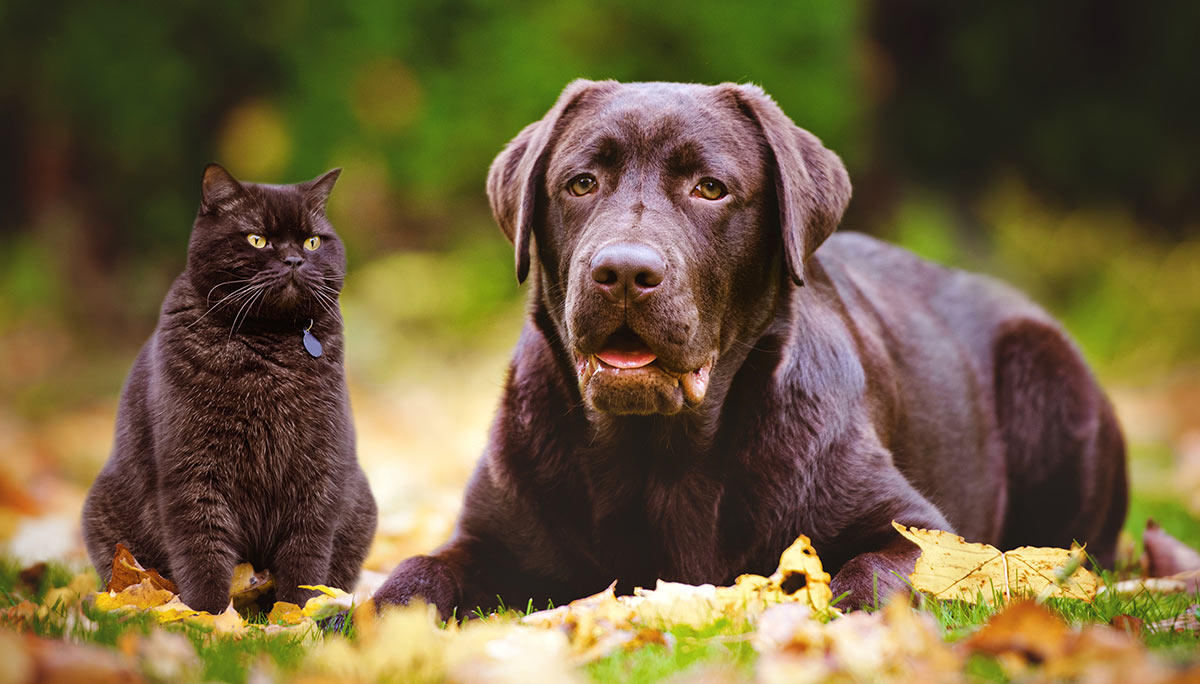
English Labrador Retrievers are popular pets for families due to their friendly nature and loyalty. If you’re looking for a traditional English Lab with a thick, stocky build and an otter tail, it’s best to find a breeder who specializes in English bloodlines. These breeders often have dogs that have excelled in the show ring, with titles like SH CH (show champion) to their name. While some American Labs are also attractive, they tend to have a leaner build and different titles such as FTCH (field trial champion). The key to finding a good breeder, whether for an English or American Lab, is to do your research and ask for recommendations. In the future, it seems that the distinction between English and American Labs will remain. Some in the working retriever community are focused on performance rather than appearance, while others prefer the classic English Lab look. Regardless of which type of Lab you choose, you can look forward to many years of companionship with a beautiful and loving pet.
